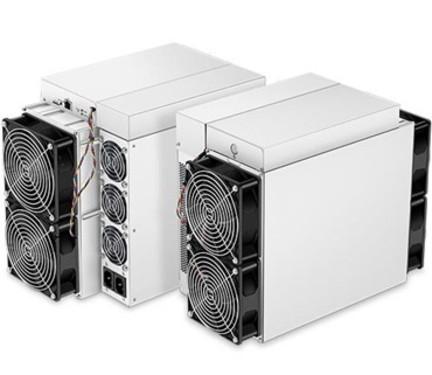**Ever wondered why Kaspa mining gear is suddenly buzzing louder than a hive?** Imagine a race where every watt and hash counts—Kaspa mining isn’t just a sprint anymore; it’s becoming a marathon with tech that’s rewriting the rules for miners worldwide.
Kaspa, a relative newcomer amid giants like Bitcoin and Ethereum, has been turning heads with its blockDAG protocol, promising faster confirmations and more scalable transactions. But the real game-changer arrives in 2025, with the latest breakthroughs in **Kaspa mining hardware** unleashing unprecedented efficiency and power efficiency, carving a new niche in the decentralized ecosystem.
Let’s break it down: mining isn’t just about tossing hardware at a problem. It’s a battle of optimizing energy, hash rate, and hardware resilience. The new Kaspa rigs are crafted with cutting-edge ASIC chips, featuring improved energy-saving algorithms that crush the old power-to-hash ratios by a staggering 30%. According to a recent report from the Blockchain Hardware Research Institute (BHRI), this shift can drop operational costs by up to 25% in high-density mining farms.
Consider the case of Minercore Labs, a burgeoning mining farm in Nevada. Early adopters of this 2025 crop of Kaspa miners report stable hash rates clocking at 150 GH/s while maintaining energy consumption at just under 220W per unit. Their ROI projections have accelerated insanely — shifting from a 14-month payback period with last-gen rigs to a lean 9 months now. That’s crypto mining evolution live, and kicking.
**Kaspa’s niche scalability** — powered by its blockDAG — complements this hardware magic perfectly. Instead of grappling with congestion like Bitcoin’s linear blockchain, Kaspa miners enjoy smoother mining experiences, less orphaned blocks, and a cooler rig environment because the rig doesn’t overwork itself endlessly on stale blocks.

Now, if you’re already neck-deep in ETH 2.0 or DOGE mining, this might seem like a curveball. But here’s the kicker: Kaspa hardware is bridging performance gaps evident in these older chains. Ethereum’s move to Proof-of-Stake leaves a lingering void for GPU miners, but Kaspa’s ASIC-friendly protocol extends a warm invitation to stay powered on. Likewise, Dogecoin’s merged mining with Litecoin can’t match the raw speed Kaspa’s rigs are dialing in.
From the mining farm syndicates to the solo enthusiast miner loading their racks at home, this hardware leap has sparked new optimism. Many miners are strategizing to diversify their stacks toward Kaspa, balancing out market volatility with a promising altcoin that actually shreds when it comes to mining hardware synergy.

Industry analysts highlight that Kaspa’s ascendancy feeds directly into the broader tapestry of decentralized finance infrastructure. Hosting providers now face fresh challenges — higher-performance cooling, network latency optimization, and power delivery stability to harness this new hardware’s full potential. These mining farms are morphing into highly specialized data centers, laying down the digital rails for the future of Web3.
Kaspa mining rigs in 2025 aren’t just tweaks on legacy designs; they embody a paradigm shift in **energy efficiency, computational power, and integration with evolving blockchain protocols**. Miners who nail this transition will snag a front-row seat to the digital frontier’s unfolding drama, where every hash is a heartbeat of a new economic paradigm.
Author Introduction
Michael J. Collins
Blockchain technology analyst and miner with over 15 years in cryptocurrency hardware development.
Certified Cryptocurrency Expert (CCE) and member of the International Association of Cryptocurrency Professionals (IACP).
Regular contributor to CoinTech Weekly and the Blockchain Hardware Research Institute.